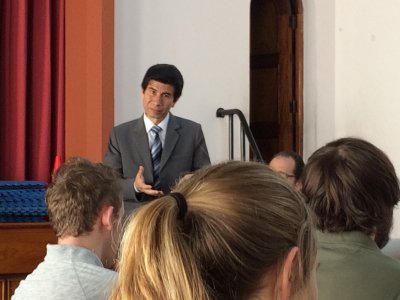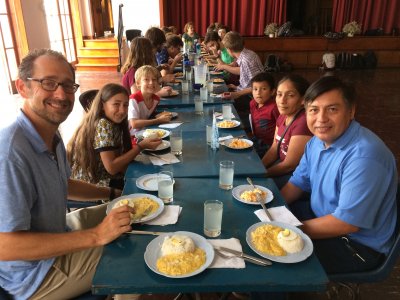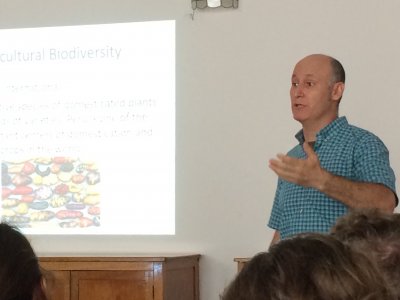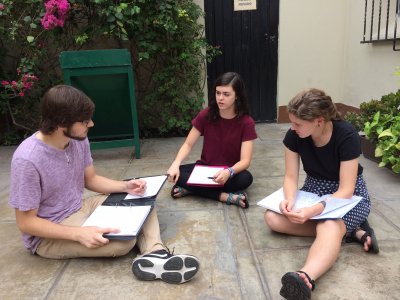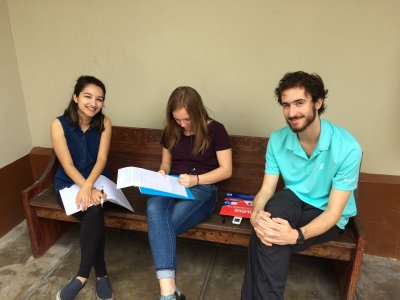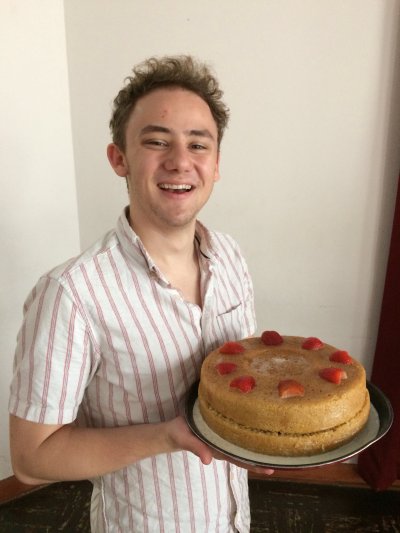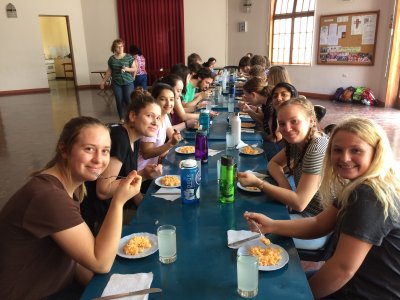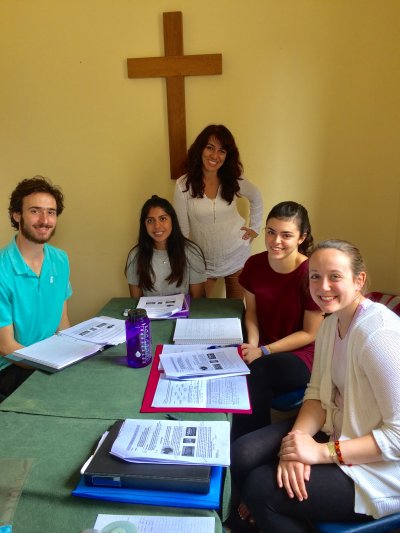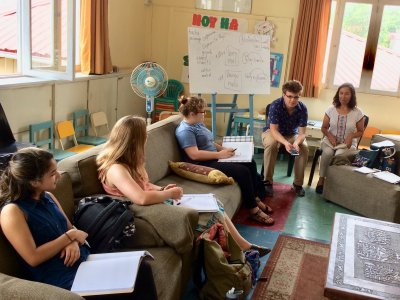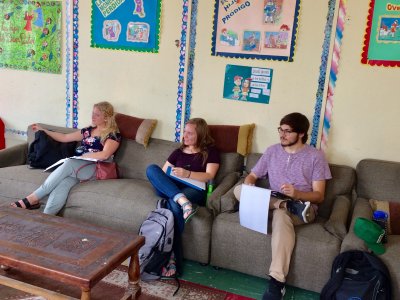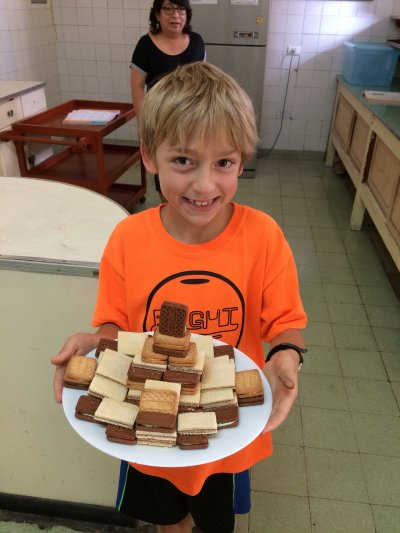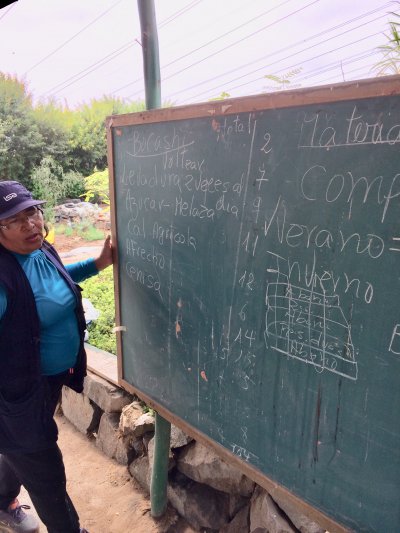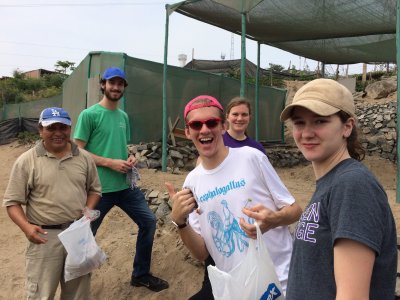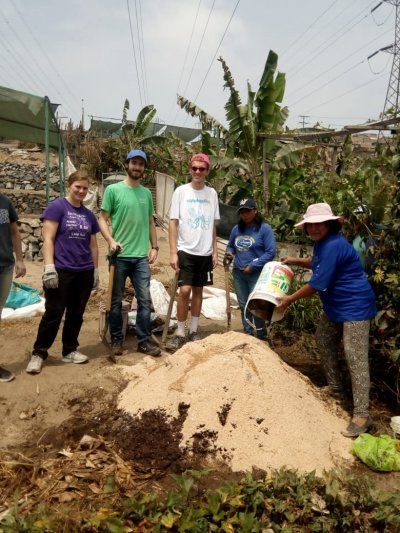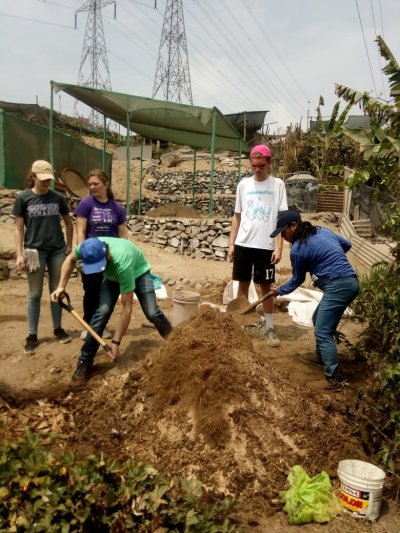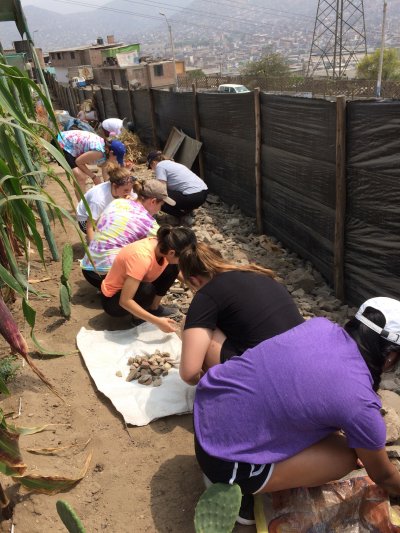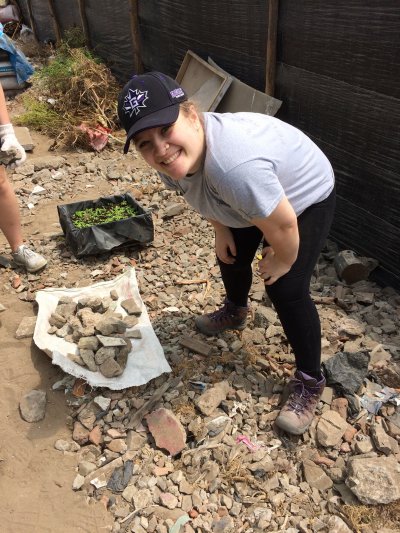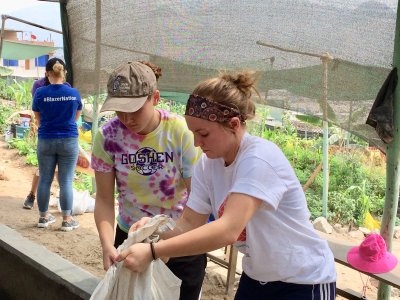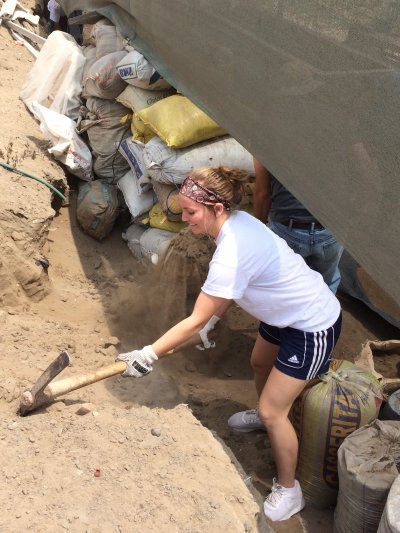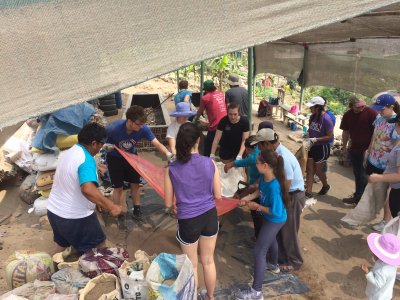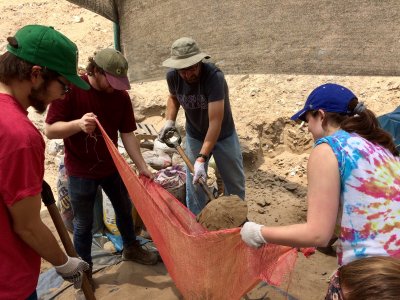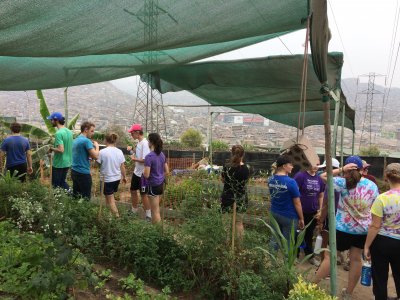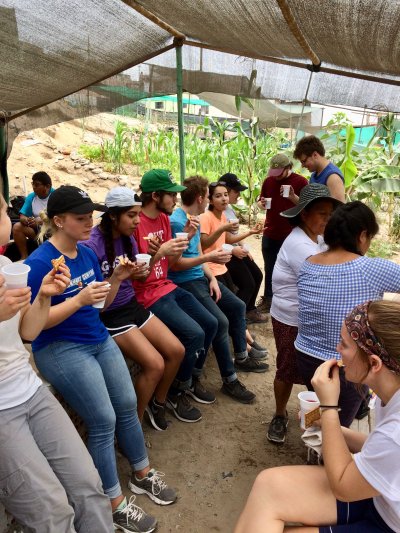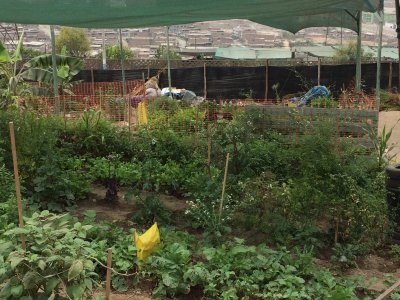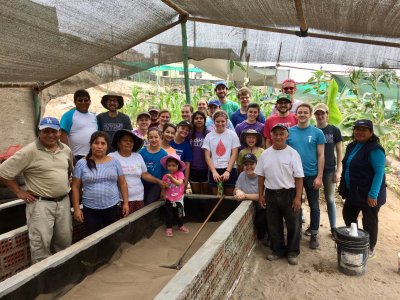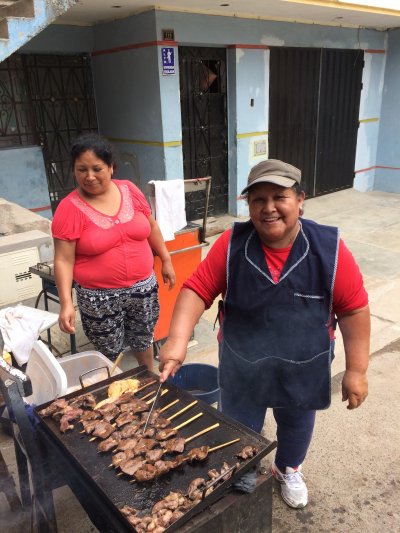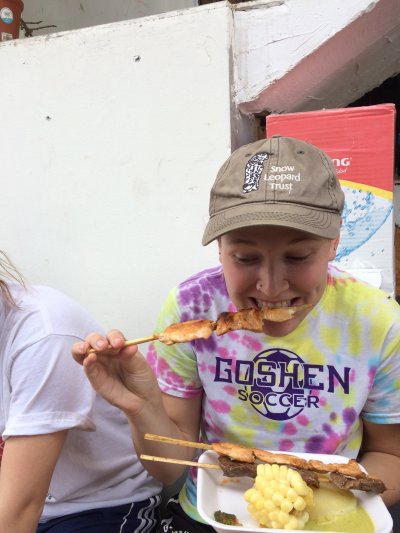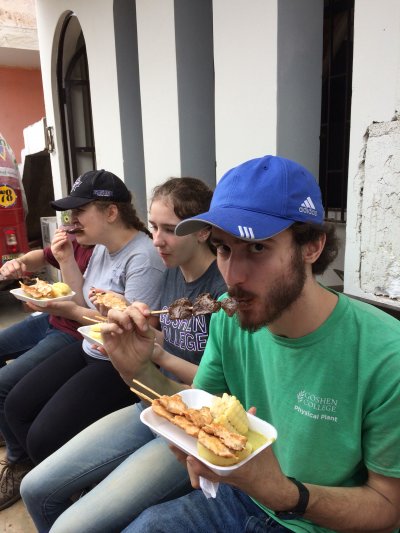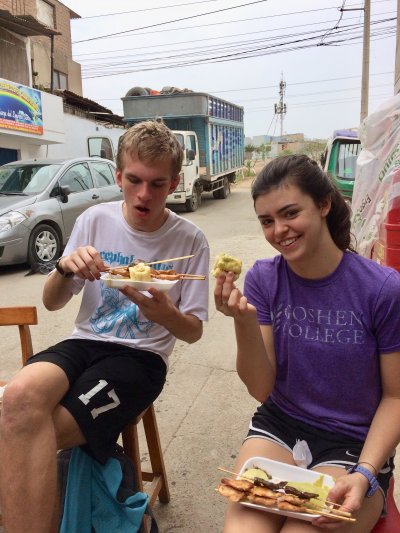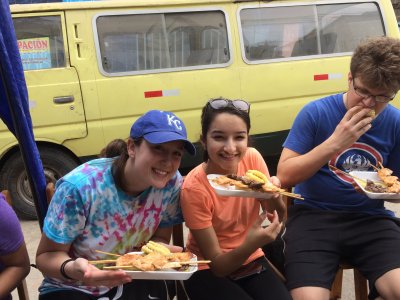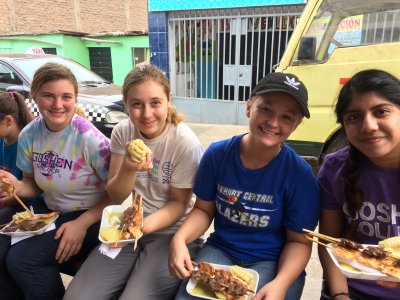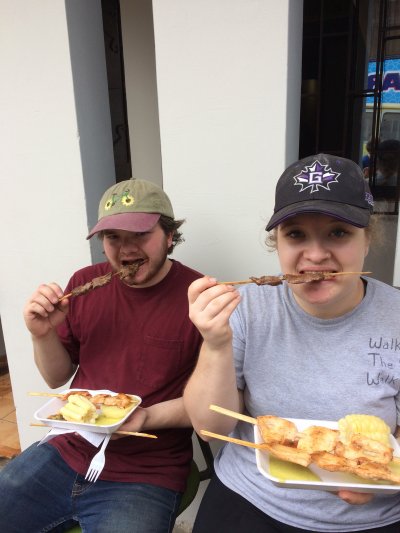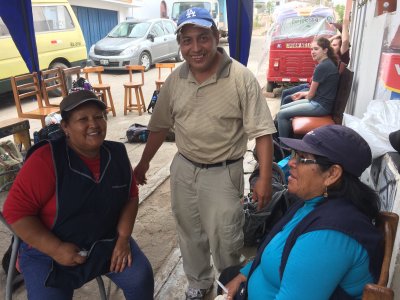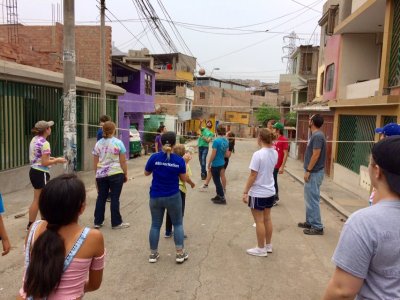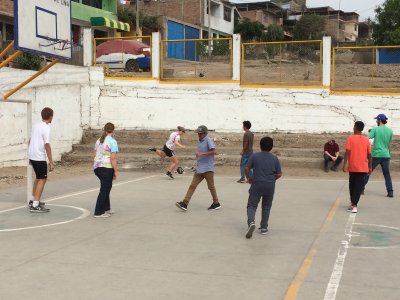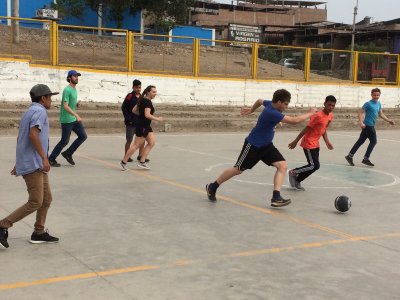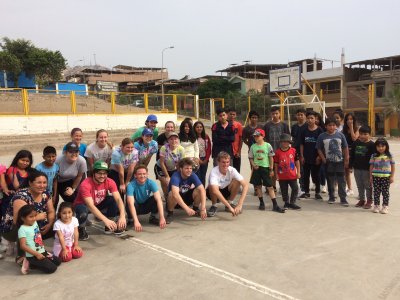Week One: Getting to know Lima
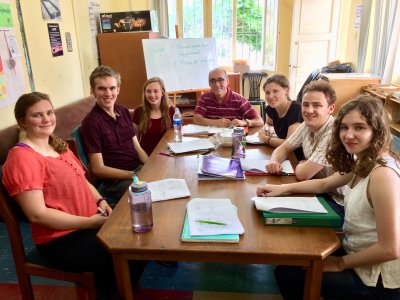
On Monday morning, students began the study portion of SST in earnest. In addition to beginning their Spanish classes, they heard lectures on Peruvian history since its independence, the natural resources of Peru, and the social problems in marginalized urban areas. These lectures were enriched by personal stories from GC service coordinator, Wily Villavicencio, about his life in the highlands and his migration to Lima as a boy, as well as a first-hand account from Willy’s sister, Corpusa Villavicencio Zela, about her participation in an invasión — the process by which hundreds of people squat on unused land in hopes of eventually being allowed to stay. Students also completed a market assignment in which they got a list from their host families and purchased all the ingredients to make a Peruvian dessert together with their family. And last but not least, by Wednesday, they had all learned how to successfully navigate public transportation to and from classes on their own.
Our weekly learnings culminated in a field trip to Cono Sur, or the southern cone, which is the name for the outlying areas of southern Lima. Economic insecurity and violence over the past half-century caused intense migration from rural areas into the outskirts of Lima, and the population has soared in these areas to the north, east and south of Metropolitan Lima. Though the more established areas of the conos now have water, electricity and some paved roads, the neighborhoods on the hillsides are still very poor and lack basic services. Much of what the students learned in their lectures about Peruvian history, natural resource distribution and the consequences of migration to urban areas are played out in the daily lives of residents in the conos. Over sixty percent of Lima’s population resides in these outlying areas.
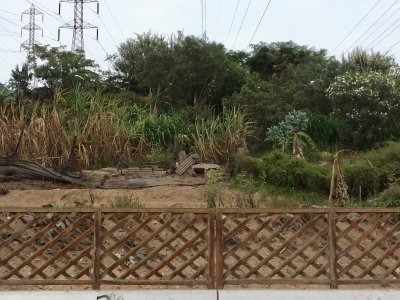
Our first stop was a visit to an organic garden project in the district of Villa Maria del Triunfo. This initiative began over 30 years ago, when women living in extreme poverty in the community partnered with the power company to convert unused spaces under the powerlines into vegetable gardens. We spoke with Señora Gregoria, who is the director of this particular garden. She said that today over 1,500 people benefit from these community gardens, which were once crime-infested spaces full of trash. About 40% of the food grown is consumed by neighborhood families and the rest is sold for income in the more affluent areas of the city where organic produce will fetch high prices. While at the garden, students worked on two projects. One group worked with bocachi, a soil additive made of yeast, sugar, lime, chaff and ash which allows the workers to grow vegetables in the sandy soil. The other group helped prepare soil for two large raised beds by sifting trash and debris out of the sand and carrying it to the containers, where further organic material will be added so it can produce food.
After working in the garden, we traveled just a few minutes away to the home of Alicia Taype, GC program assistant, who lives in Villa Maria. Alicia treated us to anticuchos, a popular Peruvian street food of grilled chicken and beef heart skewers. Afterward, Alicia’s daughter, Yuliana, set up a net for us and we had an impromptu game of volleyball.
Our last stop was to visit Cristo Redentor Anglican church in San Juan de Miraflores, another district in Cono Sur. This church partners with Compassion International to run a program for over 300 children in the neighboring area, offering food and educational assistance in the form of school supplies and tutoring. We shared a brief worship time with the children and volunteers and then enjoyed a game of soccer with some of the teens who participate in the program. Students were then dropped off by our bus at various points along the route and took public transportation home, where they will spend the weekend with their host families. Since it is summer vacation, many host families will spend time outside of Lima — at the beach, in the countryside, or visiting family.
